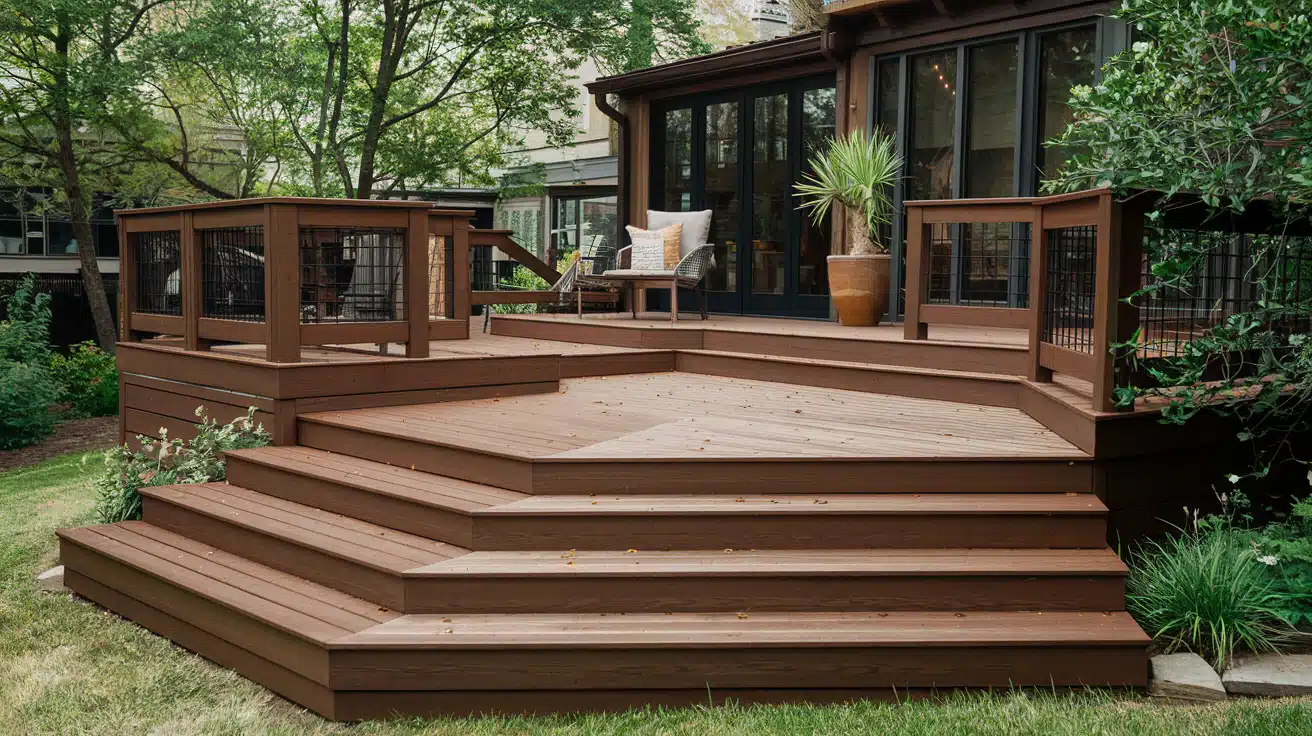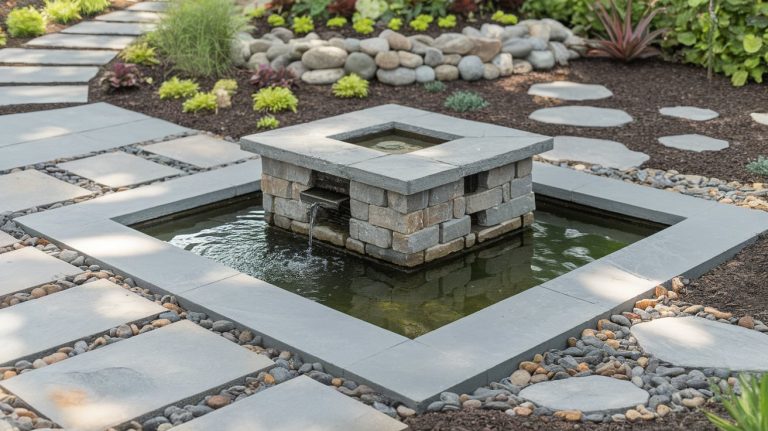Choose Best Exterior Wood Stains and Sealers for Durability
If you’re like me, you’ve probably stood in the paint aisle staring at rows of wood stains and sealers, wondering which will last longer than a season.
I’ve learned that not all exterior wood stains are created equal. Some peel within months, while others keep wood protected for years.
I’ll help you avoid the costly trial and error I went through by showing you exactly which stains and sealers offer the best protection for your outdoor wood.
After testing dozens of products over my 30+ years as a painter, I’ve figured out what works.
In this guide, I’ll discuss the most durable options available today, from solid stains to clear sealers, so you can make an informed choice that will save you time and money.
Best Wood Stains for Long-Lasting Protection
| Type of Stain | Protection Duration | Best For | Benefits |
|---|---|---|---|
| Solid Stains | 3-5 years | Older decks or weathered wood | It offers strong protection, hides imperfections, and creates a smooth finish, balancing paint and stain. |
| Semi-Solid Stains | 2-4 years | Fences, pergolas | Provides a good balance between natural wood grain visibility and reliable protection. |
| Semi-Transparent Stains | 2-3 years | Newer decks or wood with beautiful grain | It allows the wood’s grain to shine while offering protection from the elements. |
| Clear Sealers | 1 year | Exotic woods, rustic look | It offers light protection and enhances the natural appearance of the wood without altering its color. |
Top Brands That Stand the Test of Time
1. DEFY Extreme: Overall Champion
- Water-based formula that fights UV damage like a champ
- Zinc particles act like tiny sunscreen for your wood
- Available in 7 natural-looking shades
2. Olympic Maximum: Weather Warrior
- Handles rain, snow, and sun like a pro
- One-coat coverage that works
- Excellent value for the price
3. Cabot: Old Reliable
- Going strong since 1877
- Deep wood penetration for lasting protection
- Performs consistently in various climates
Quick Tip: Before you commit to a stain, always test it on a small, hidden area first. I can’t tell you how often this simple step has saved my clients from a color surprise!
What Makes Your Wood Stain Last Longer?
Mother Nature’s Impact on Your Stain
Let’s face it – the sun’s a real stain killer. South and west-facing decks take the biggest beating.
I’ve seen beautiful finishes turn chalky and fade in months on surfaces hammered by direct sunlight all day. For these spots, go with darker pigmented stains – they fight UV damage better than clear sealers.
Rainfall and Moisture: The Silent Wood Killers
Protect wooden surfaces by monitoring key signs of water damage and deterioration.
Watch for changes in water beading patterns on finishes, address areas where water frequently collects, and give special attention to vulnerable spots like joints and end grain where moisture absorption is highest.
Regular inspection of these areas helps prevent serious water damage and extends the life of wooden items.
Temperature Swings Matter
Frequent temperature changes cause wood to expand and contract, especially in areas with significant day-to-night shifts.
To protect surfaces, use flexible finishes that adapt to movement, apply extra protection on south-facing regions, and plan for regular maintenance to prevent damage.
Your Local Climate’s Role
Your local climate affects how wood behaves over time. In humid areas, choose mold-resistant finishes to prevent moisture damage. If you live in a dry environment, use moisturizing oils to keep wood from cracking.
Coastal regions require extra UV protection to shield against sun and salt exposure. Selecting the right stain ensures durability in your specific environment.
Your Wood’s Story Makes a Difference
Understanding the differences between pressure-treated and natural wood is essential when working with wood.
Pressure-treated wood requires drying before it can be stained properly, while natural wood is more absorbent and often needs extra protection.
For woods like cedar and redwood, their natural oils can impact how well stains adhere. The age of the wood also plays a role in how it absorbs stains.
New wood typically requires a weathering period, whereas older wood is more porous and may need additional sealing. Middle-aged wood is often in the perfect condition for applying stains without much prep.
Pro Tip: I tell my clients that your prep time directly affects how long your stain job lasts. Cut corners here, and you’ll pay for it later.
Keeping Your Finish Looking Fresh: Maintenance Tips
Regular Check-Ups Save Money
Regular inspections help prevent costly repairs. A quick monthly visual check can catch early signs of damage. Seasonal deep cleaning and spot checks maintain the wood’s condition, while a thorough annual inspection ensures long-term durability.
After storms, pay extra attention to vulnerable areas to address issues before they worsen.
Keeping It Clean
Keeping wood surfaces clean helps extend their lifespan. Sweep weekly to prevent dirt buildup, wipe up spills immediately to avoid stains, and clear away leaves and debris regularly.
If mildew appears, address it right away to prevent further damage. A little maintenance goes a long way in preserving your wood.
Touching Up Problem Areas
Addressing minor issues early helps prevent costly repairs. Store leftover stains for quick touch-ups, repair damaged areas as soon as they appear, and monitor high-traffic spots for wear.
Pay extra attention to exposed edges and joints, as these areas are more vulnerable to damage.
Red Flags: When It’s Time to Reapply
Color Changes Tell a Story
Changes in wood color can signal underlying issues. Graying in exposed areas indicates sun damage, while patchy or uneven color may mean the finish wears off.
A dull, chalky look suggests the protective coating is breaking down, and dark spots often point to moisture buildup. Regular monitoring helps catch problems early.
Water Behavior Changes
Changes in how water interacts with wood can signal the need for maintenance.
If water no longer beads on the surface, dark spots appear after rain, drying takes longer than usual, or moisture soaks in right away, it’s time to refresh the finish to protect against damage.
Surface Problems to Watch
Surface issues can indicate wear and potential damage. A rough or fuzzy texture may mean weathering, while cracks and splits suggest the wood is drying out.
Raised grain often follows prolonged moisture exposure, and peeling or flaking finishes signal the need for refinishing. Regular checks help catch these problems early.
Protection Breaking Down
If your wood protection is wearing down, you may notice soft or spongy areas, green or black spots indicating mold or mildew, moisture absorption at the end grain, or a dry, brittle texture.
These signs mean it’s time to reapply a protective finish to prevent further damage.
Pro Tip: Take photos of your deck once a year – it’s amazing how much easier it is to spot changes when you can compare pictures side by side.
Conclusion
After trying countless products over three decades, I’ve learned that picking the right stain is only half the battle. Success comes down to three simple things: proper prep, quality products, and regular maintenance.
Here’s my final nugget of wisdom: invest time in testing products on a small area first. I’ve saved countless clients from costly mistakes with this simple step. Whether you go with a solid stain for maximum protection or a clear sealer to show off that beautiful grain, remember that the best product is the one that matches your specific needs and maintenance commitment.
Do you have questions about your specific project? Drop them in the comments below. I’m always happy to share what I’ve learned from my hits and misses over the years.












